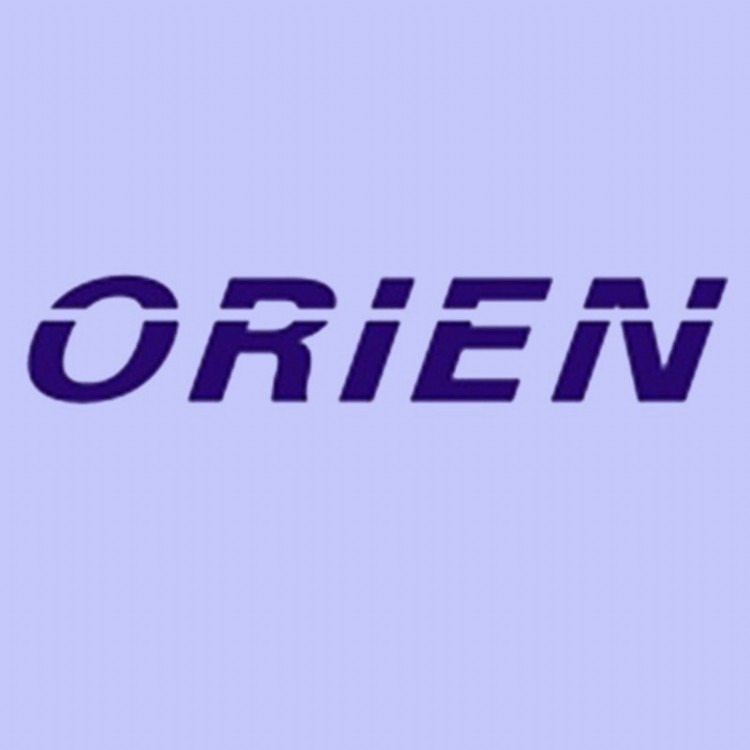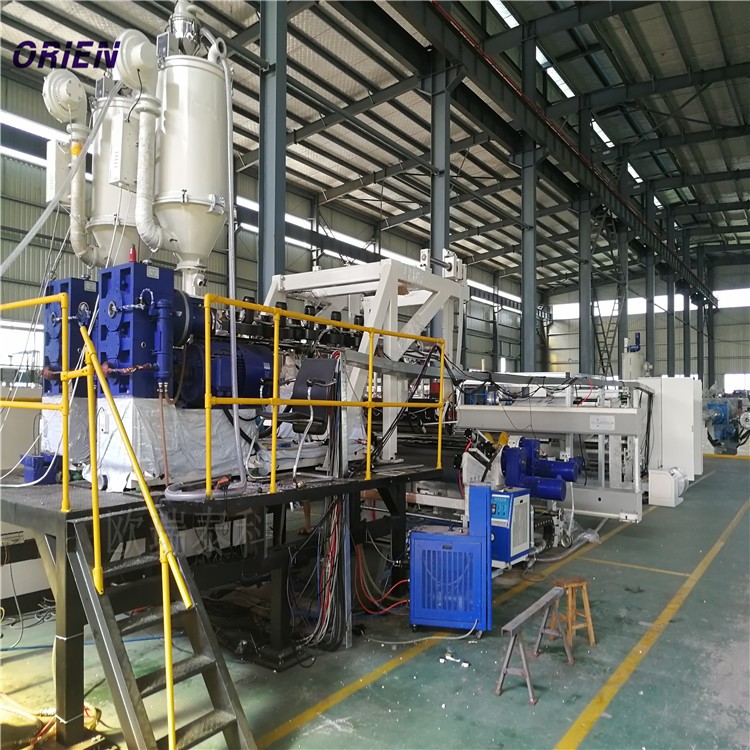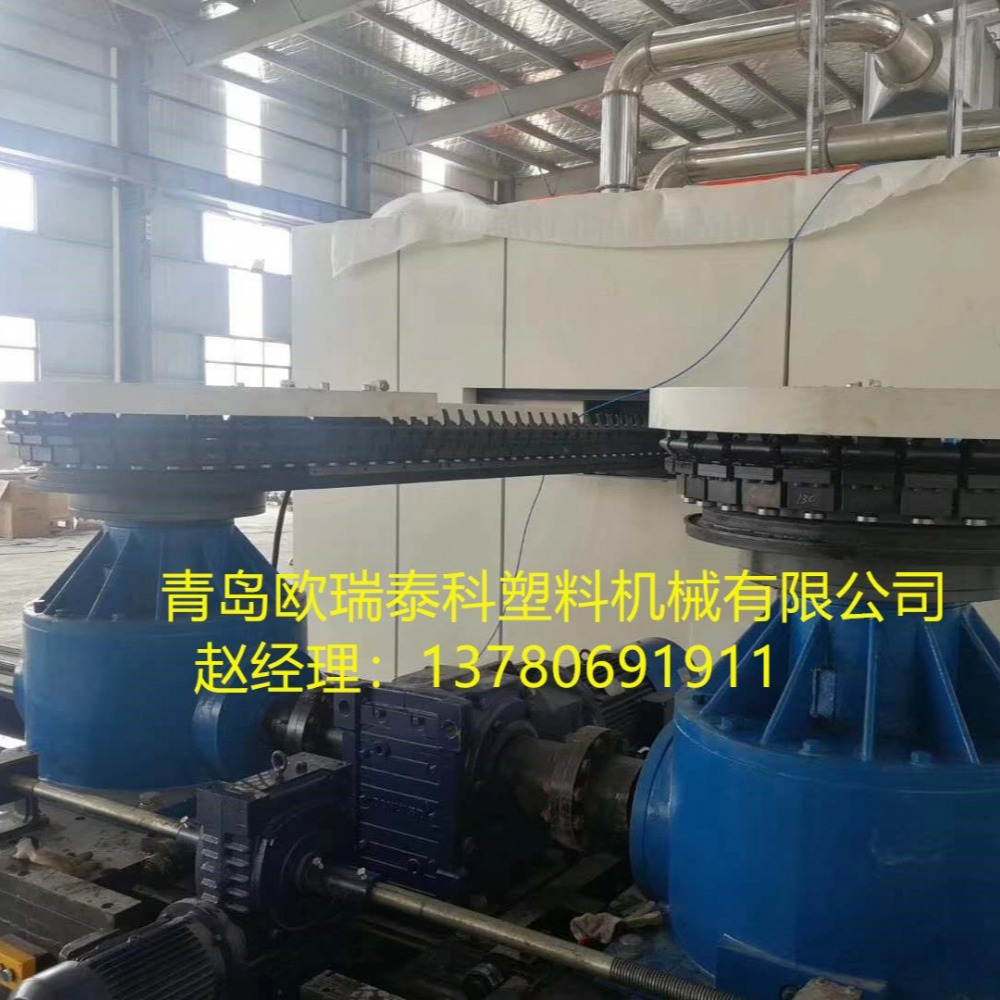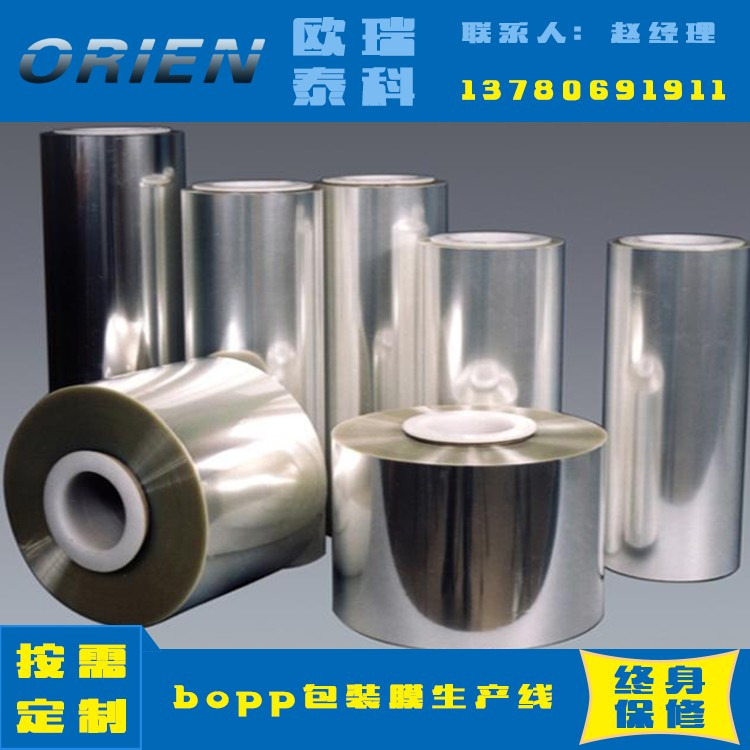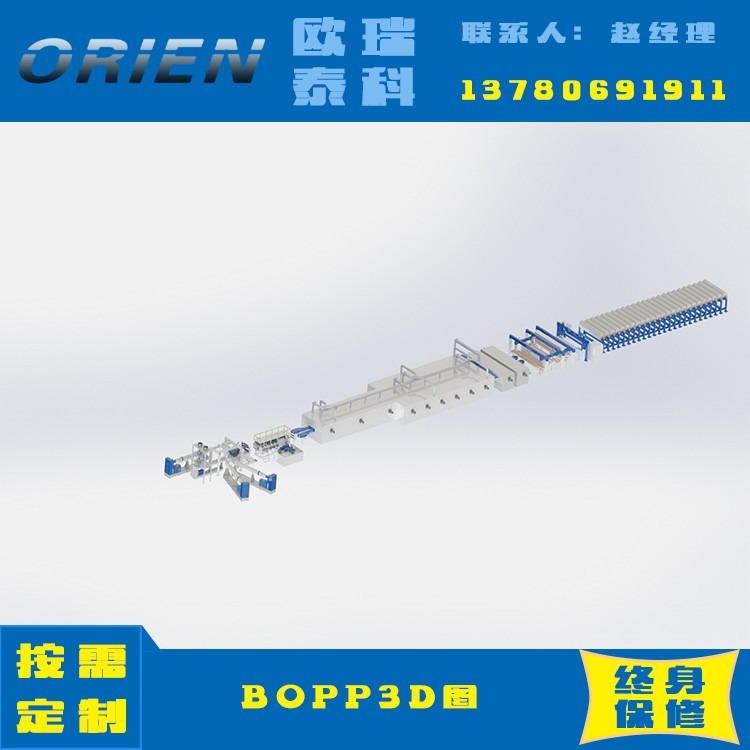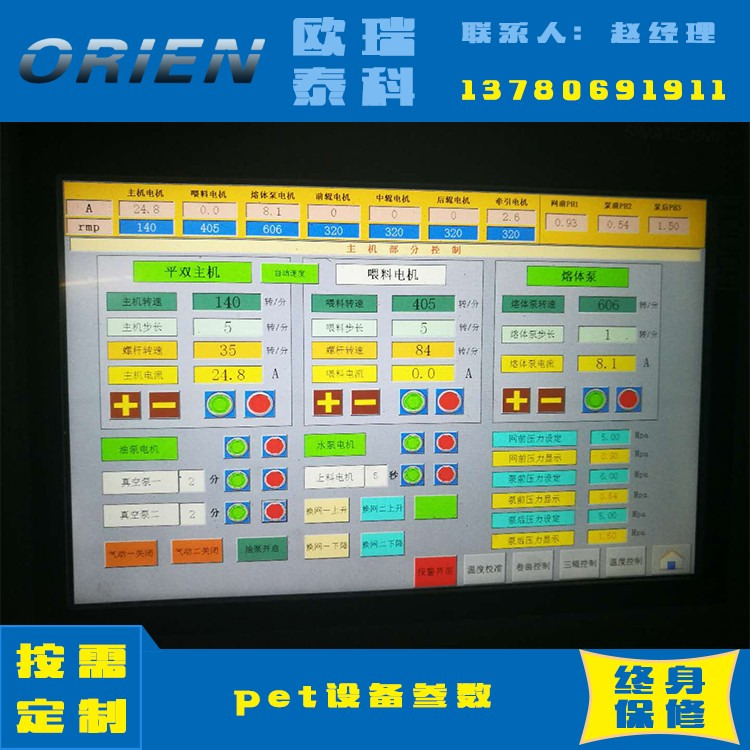
产品详情:
pvdf流延膜生产线是青岛欧瑞公司自行开发设计,填补国内多项技术空白,处于行业领先地位。
1、全套设备采用西门子PLC,闭合控制,一键提速,操作方便。
2、挤出机特殊的螺杆设计,确保塑料融化,色泽均匀、挤出量高
3、全自动模具配合测厚仪,能更有效地微调模头横向宽度上的熔体厚度偏差,厚薄均匀度保证±1丝。
4、流延辊采用内流道整体机加工的方式,保证温度控制正负1度,滚面控制精度正负1丝 ,确保流延膜厚度更加精准。
5、采用意大利Re张力传感器和控制系统,确保张力控制正负1牛。
6、全套伺服电机,配合伺服控制器使设备运行更加精准。
7、全自动切断收卷机具有接触收卷、间隙收卷两种功能,收卷带锥度张力控制,调节范围5-200N/M
青岛欧瑞pvdf流延膜生产线已经在国内主要厂商成功开机生产,并得到广泛认可和高度评价。
PVDF流延膜的由来
在光伏行业起步的前些年,光伏背板材料端一直是杜邦的Tedlar® PVF薄膜(简称T膜)占据了市场的主流,各大终端、组件厂也是在这个时候认识了T膜这种材料,并且也在实际的产品中大规模应用。由于杜邦T膜的产能限制,相应背板产品满足不了市场快速扩张的需求,另外杜邦T膜产品售价较高,促使行业开始探索寻求一款低成本的含氟薄膜替代杜邦T膜,这就给了PVDF薄膜一个发展的良好窗口期,2009年左右,法国阿科玛公司开发了三层结构的Kynar® PVDF薄膜(简称K膜),并注册商标KPK®,其产品定价低于杜邦T膜产品,产能也快速扩张,业内客户逐渐接受并开始采用此K膜产品,但由于三层结构的PVDF制作工艺较为复杂,成本仍然高于市场预期,于是工艺更为简单的单层PVDF薄膜应需而生,同样简称为K膜,成本随工艺简化大幅降低,受市场扩张及低成本需求影响,韩国,日本地区几家公司迅速加入到单层K膜的生产行列并占领了部分细分市场。时间来到2014年,中国部分企业察觉商机也纷纷加入到单层K膜生产行列,以更低的价格博取市场的青睐,截止2016年底K膜类复合背板整体市场占有率接近50%,凭借低廉的价格K膜成为重要的背板复合材料之一。
PVDF流延膜的配方及工艺
PVDF是目前使用量第二大的氟塑料,PVDF颗粒自身难以成膜,如若要把PVDF颗粒制成薄膜必须添加30%左右的聚甲基丙烯酸甲酯(简称PMMA,俗称亚克力)作为增塑剂以提高其成膜性,加入PMMA后的PVDF在熔融状态下更容易成膜。关于PVDF薄膜的成膜工艺市场上以吹膜和流延两种成型工艺为主,但流延法pvdf膜在透光度、厚薄均匀度等参数上更有优势,pvdf流延膜生产线已成为现阶段主流发展方向。
装饰用pvdf生产线是两台挤出机通过膜内复合工艺即可达到客户对pvdf膜性能的要求,根据所使用的设备和加工的制品形状,温度控制在210~220摄氏度之间,pvdf流延膜生产线 ,成型温度控制在180~240摄氏度之间,必须严格控制温度不能使温度长期超过其熔融温度。挤塑成型设备可选用单螺杆挤出机。

PVDF cast film production line
The PVDF cast film production line is developed and designed by QINGDAO ORIEN TECH PLASTIC MACHINERY CO., LTD. which fills many domestic technical gaps and is in the leading position in the industry.
1, the complete set of equipment uses Siemens PLC, closed control, one-speed speed, easy to operate.
2, the special screw design of the extruder ensures that the plastic melts, the color is uniform, and the extrusion volume is high.
3, fully automatic mold with thickness gauge, can more effectively fine-tune the thickness deviation of the melt on the transverse width of the die, thickness uniformity to ensure ± 1 wire.
4. The casting roller adopts the internal machining method of the inner flow channel to ensure that the temperature control is plus or minus 1 degree, and the rolling surface control precision is plus or minus 1 wire to ensure the thickness of the cast film is more accurate.
5, using the Italian re-tension sensor and control system to ensure that the tension control is plus or minus one cow.
6, a full set of servo motors, with the servo controller to make the equipment run more accurately.
7, automatic cutting and winding machine has two functions of contact winding, gap winding, winding with taper tension control, adjustment range 5-200N / M
QINGDAO ORIEN TECH PLASTIC MACHINERY CO., LTD. PVDF cast film production line has been successfully put into production in major domestic manufacturers, and has been widely recognized and highly evaluated.
The origin of PVDF cast film
In the year before the start of the photovoltaic industry, the PV back sheet material end has always been DuPont's Tedlar® PVF film (referred to as T film) occupying the mainstream of the market. The major terminals and component factories also recognized the T film material at this time. And it is also applied on a large scale in actual products. Due to the limited production capacity of DuPont enamel film, the corresponding backsheet products can not meet the rapid expansion of the market demand, and the higher price of DuPont enamel film products prompted the industry to explore the search for a low-cost fluorine film instead of DuPont T film. A good window for the development of PVDF film was given. Around 2009, Arkema of France developed a three-layer structure of Kynar® PVDF film (K film for short) and registered trademark KPK®, which is priced lower than DuPont film. The products and production capacity also expanded rapidly. The customers in the industry gradually accepted and began to adopt the enamel film products. However, due to the complicated process of the PVDF production process of the three-layer structure, the cost is still higher than the market expectation, so the single-layer PVDF film with simpler process needs Born, also referred to as enamel film, the cost is greatly reduced with the simplification of the process. Due to market expansion and low-cost demand, several companies in Korea and Japan quickly joined the production of single-layer enamel film and occupied some market segments. Time came to 2014, and some Chinese enterprises have noticed that business opportunities have also joined the ranks of single-layer enamel film production, and they have won the favor of the market at a lower price. By the end of 2016, the overall market share of enamel-based composite backsheets is close to 50%. Low cost enamel film has become one of the important backsheet composites.
Formulation and process of PVDF cast film
PVDF is the second largest fluoroplastic used at present. PVDF particles are difficult to form on their own. If PVDF particles are to be made into thin film, about 30% polymethyl methacrylate (PMMA, commonly known as acrylic) should be added as a plasticizer. In order to improve the film formability, PVDF after the addition of PMMA is more easily formed into a film in a molten state. Regarding the film forming process of PVDF film, the two processes of blown film and casting are mainly used in the market, but the PVDF film of casting method has advantages in parameters such as transmittance and thickness uniformity, and the PVDF cast film production line has become the mainstream development direction at this stage.
The PVDF production line for decoration is the requirement of the customer's PVDF membrane performance through the in-membrane composite process of the two extruders. According to the equipment used and the shape of the processed product, the temperature is controlled between 210 and 220 degrees Celsius, and the PVDF is cast. In the film production line, the molding temperature is controlled between 180 and 240 degrees Celsius. The temperature must be strictly controlled so that the temperature does not exceed its melting temperature for a long time. A single screw extruder can be used for the extrusion molding equipment.
